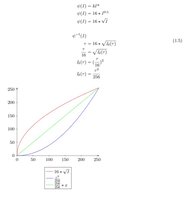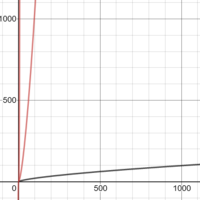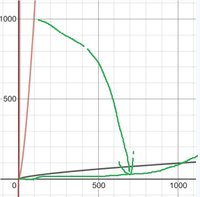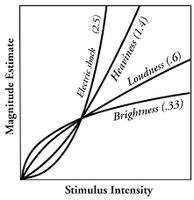Hi,
I had some problems that I couldn't figure out by myself. I got the formula (100/(1023)0.67) * X0.67
This gives a slighty curved line with Y axis 100 and X axis 1023.
When I want to inverse this formula I get: Sqrt of 0.67 (x/(100/(1023)0.67)) (see picture)
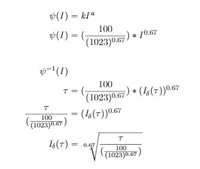
But what happens is that the inverse of this formula got an Y of 1023 and X of 100.
My qeustion is there a way that this formula can be written so both plots have a Y of 100 and a X of 1023?
Thanks in advance
Kylian
I had some problems that I couldn't figure out by myself. I got the formula (100/(1023)0.67) * X0.67
This gives a slighty curved line with Y axis 100 and X axis 1023.
When I want to inverse this formula I get: Sqrt of 0.67 (x/(100/(1023)0.67)) (see picture)

But what happens is that the inverse of this formula got an Y of 1023 and X of 100.
My qeustion is there a way that this formula can be written so both plots have a Y of 100 and a X of 1023?
Thanks in advance
Kylian

